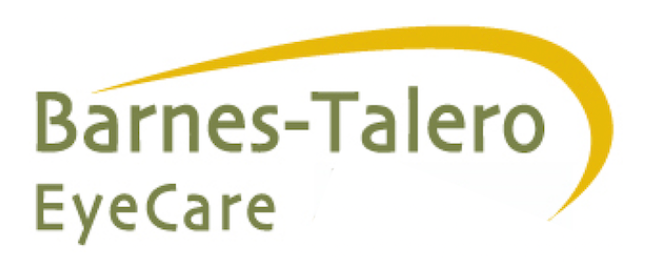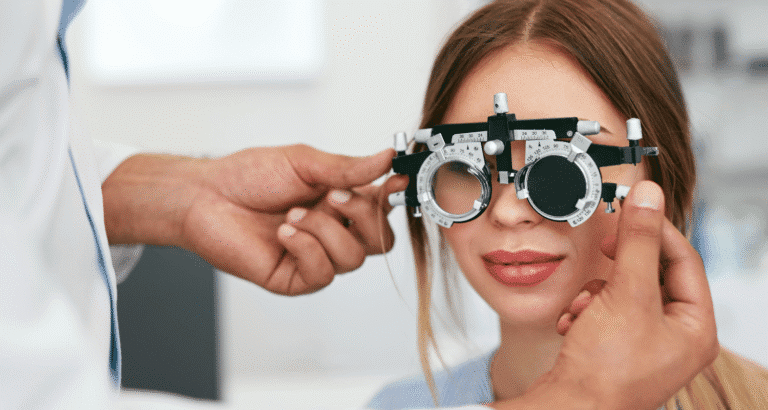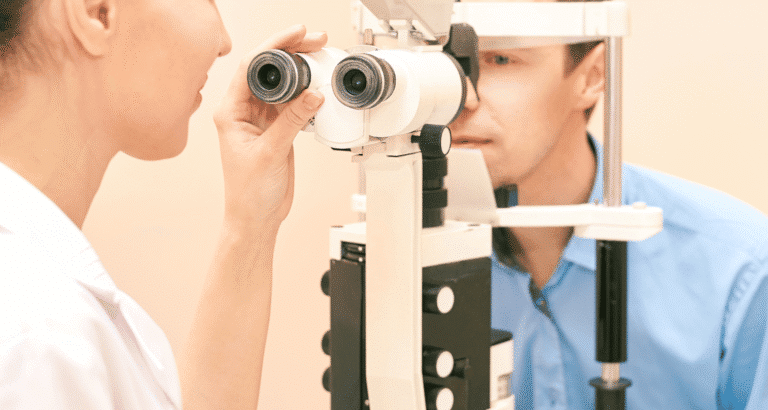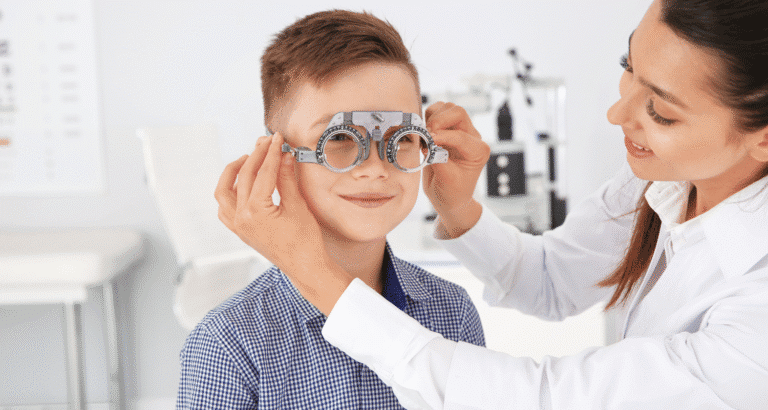Many people dealing with blurry near vision often ask, how is farsightedness corrected and what options exist to restore clear sight. Known as hyperopia, this condition affects many people worldwide and can make it difficult to perform everyday tasks, such as reading, writing, or using digital devices. Fortunately, modern ophthalmology has developed numerous approaches to treating farsightedness, tailored to meet a patient’s needs, preferences, and expectations.
Glasses as the First Line of Farsightedness Treatment
Glasses remain the most popular and straightforward solution for most people, although surgical correction and other methods are also available. Patients need to understand the available approaches to make an informed decision that will help them restore the sharpness of their vision and feel at ease. For most patients, glasses are the first and most reliable treatment.
Hyperopia Correction With Contact Lenses
When wearing glasses is inconvenient or lifestyle concerns make it difficult, hyperopia can also be corrected with contact lenses. Contemporary models provide a clearer vision while still providing the range of views that come more naturally to most. Soft lenses are affordable and convenient for daily wear, while their rigid gas-permeable counterparts offer sharper correction for higher prescriptions. Specialty designs, such as multifocal contacts, enable individuals to focus on tasks near and far without having to switch between glasses. Tinted and custom contact lenses offer both vision correction and cosmetic options for individuals who require corrective lenses and also desire appearance-enhancing choices.
Exploring Contact Lenses Further
Not only that, but today’s contact lenses come in advanced designs designed to meet the unique needs of individuals. Daily disposables reduce the need for cleaning and lower the risk of infection, while extended-wear lenses can be worn overnight if properly maintained and cared for. Custom-made lenses provide a personalized fit for individuals with abnormal corneal shapes. These advancements make contact lenses a versatile and practical solution, establishing them as an incredibly effective means of hyperopia correction.

Farsightedness Surgery for Long-Term Results
For those seeking long-term solutions, farsightedness surgery can help achieve substantial improvements and eliminate the need for daily corrective lenses, such as glasses or contact lenses. The surgery achieves this by reshaping the cornea to ensure that light focuses properly on the retina. These techniques are safe, well-established, and have consistently high patient satisfaction rates. Because, while glasses or lenses work outward, the surgery deals with the eye itself, and as a result, one becomes less dependent on material aid compared to others, allowing them to enjoy greater independence from glasses or contacts.
LASIK Lenses and Laser Surgery
LASIK is one of the most popular surgical options for correcting hyperopia. With a laser that alters the shape of the cornea, LASIK reshapes the cornea to adjust its focusing power, restoring near vision to a remarkable degree. This is a highly advanced laser surgical technique that has evolved; now, even the bladeless procedure appears to be safe and accurate. You may recover soon afterwards, and most patients recover within a few days. LASIK remains an option for individuals with mild farsightedness who are suitable candidates.
Other Forms of Refractive Surgery
In addition to LASIK, alternative types of refractive surgery can be performed on patients with hyperopia. PRK (photorefractive keratectomy) can reshape the cornea’s surface, making it suitable for patients with thinner corneas. LASEK, which is a modification of PRK, involves surface reshaping with epithelial retention. For more complex cases, SMILE (Small Incision Lenticule Extraction) provides a new-generation surgical alternative. These techniques open new surgical horizons, allowing patients with diverse eye structures or at various stages of disease to receive corrective treatments.
Lens Implants for Severe Hyperopia
Lens implants offer an alternative option when hyperopia is too high to be corrected with laser surgery. These intraocular lenses are implanted in the eye during surgery, serving as a permanent replacement for the natural lens. They are especially useful for patients with high vertex power and those who are not suitable for corneal reshaping techniques. Implantable Lenses are bio-compatible, safe, and durable, and virtually make glasses disappear.
Eye Drops for Mild Hyperopia
Prescription eye drops have been developed in recent years that may improve near vision in some individuals with hyperopia. By momentarily changing the size of the pupil, these drops enable a greater depth of focus, resulting in less blurring when performing close-up work. Although they are not a cure, non-invasive alternatives are available for patients with light or mild symptoms who want to avoid glasses or surgery.
Vision Therapy and Eye Exercises
For children or individuals with farsightedness that also involves focusing issues, vision therapy and eye exercises may be beneficial. These therapies use controlled exercises to improve eye–brain coordination. Although these do not eliminate the anatomic causes of hyperopia, they can alleviate strain and enhance visual comfort, and in many cases, may be combined with other treatments, such as glasses or contact lenses.
Choosing Between Glasses Types and Contact Lenses
For many patients, the decision between glasses and contact lenses is a matter of personal preference. Glasses are simple, require little upkeep, and are cheap, while contacts offer more flexibility for sports, the outdoors, and fashion. People even switch between the two, wearing glasses during sedentary periods at home and contacts when engaging in more active or social activities. Discussing these choices with an eye doctor helps you obtain the right combination of comfort, clear vision, and ease.
Safety and Issues for Laser Surgery
Highly successful procedures such as laser surgery, however, are not for everyone. Corneal thickness, eye health, and prescription strength will all be taken into account in deciding suitability. It is mandatory to undergo a comprehensive eye examination before surgery. Patients also need to consider recovery times, potential side effects such as dry eyes, and how long the results will last. With thoughtful planning, surgical intervention can offer life-altering results!
Future Directions in Hyperopia Treatment
Technological progress continues to open up new avenues for innovative treatments. With more advanced lasers and better refractive surgery techniques, as well as implantable options, the safety net is becoming a stronger one. Pharmacological therapies, such as improved eye drops, may one day provide options for patients who prefer not to undergo invasive surgery. We are on the right path to effective hyperopia treatments, with more customization and resolution along the way.
Conclusion
So, how is farsightedness corrected? The solutions range from glasses and contact lenses to advanced forms of surgery and emerging treatments, such as specialized eye drops. There is a place for each choice based on an individual’s needs, vision/lifestyle, and health. For some, a simple solution is a pair of glasses, while for others, surgery or lens implants may provide longer-lasting relief. Additionally, what matters most is personalized attention from a trusted professional. For professional recommendations, comprehensive eye examinations, and customized treatment plans, come to Barnes Talero Eyecare.
FAQs
Is it possible to correct farsightedness?
Yes, farsightedness is correctable, with measures such as glasses, contact lenses, or surgery. The decision is based on the degree of the problem, general eye health, and a person’s lifestyle requirements.
Can you correct farsightedness naturally?
Farsightedness cannot be naturally corrected; only glasses, contacts, or surgery can provide a true fix. However, eye exercises, a balanced diet, and healthy habits may help ease strain and support overall vision health, although they won’t cure the condition.
What causes you to become farsighted?
Farsightedness, on the other hand, is the result of an eyeball that’s too short or a cornea that’s too flat; it causes light to be focused behind rather than on the retina. A family or personal history of hyperopia, genetics, and advancing age may contribute to the risk of being farsighted.
How do lenses correct farsightedness?
Convex lenses bend light rays inward (that is, toward each other) before they enter the eye, enabling the image to focus on the retina. In glasses, contact lenses, or LASIK lenses, this power adjustment is used to correct clear vision at near and reduce eye strain.





